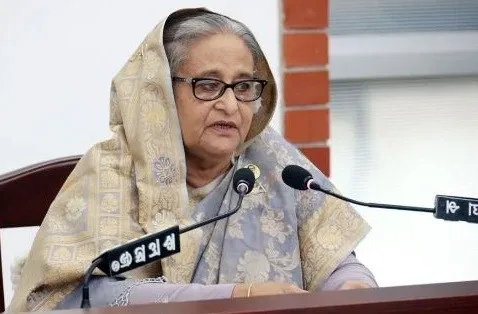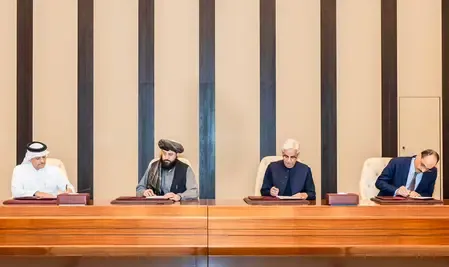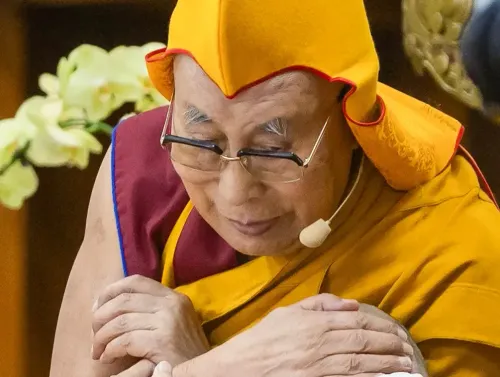Did Former Bangladesh PM Sheikh Hasina Really Demand to Be Shot and Buried?

Synopsis
Key Takeaways
- Sheikh Hasina's demand highlights her desperation amidst military pressure.
- The protests reflect deep-seated issues within Bangladesh's political landscape.
- Over 500 fatalities underline the severity of the unrest.
- Hasina's exit marks a significant moment in Bangladesh's democratic history.
- The interim government's actions raise concerns about the future of democracy in the nation.
Dhaka, May 28 (NationPress) Following intense pressure from the Bangladeshi military, former Prime Minister Sheikh Hasina expressed her frustration by demanding that officials shoot and bury her at her official residence, Ganabhaban.
"Then you shoot me and bury me here, in Ganabhaban," Hasina exclaimed.
This revelation came during a hearing at the International Crimes Tribunal (ICT), presented by chief prosecutor Mohammad Tajul Islam, as reported by the prominent Bangladeshi daily, Prothom Alo.
A formal charge was introduced concerning crimes against humanity linked to the events in the Chankharpul area during the mass protests in July, which tragically resulted in over 500 fatalities.
The protests erupted over a disputed quota system for government jobs and had been escalating in the country for two months.
The chief prosecutor also revealed that the then parliament speaker, Shirin Sharmin Chaudhury, suggested that Hasina resign during the uprising, a proposal that was rejected by senior officials of the Awami League, including general secretary Obaidul Quader.
He recounted a series of critical meetings that unfolded on August 4-5, highlighting the tumultuous final hours of Sheikh Hasina's leadership in Bangladesh.
Reports indicate that a highly charged meeting occurred at Ganabhaban, involving key ministers, influential leaders from the ruling party, and military and law enforcement heads, marked by heated debates.
According to Tajul Islam, during a midnight meeting on August 5, the then defence advisor, Major General (Retd) Tarique Ahmed Siddique, urged Hasina to resign.
In another meeting later that day, Hasina was informed by the then IGP Chowdhury Abdullah Al-Mamun that the police situation had become untenable. "We are out of arms and ammunition, and the force is nearly exhausted," he stated. This prompted the military to intensify pressure on Hasina to resign.
In a defiant response to the army chief, Hasina retorted, "Then shoot me and bury me here, in Ganabhaban."
Before her departure, Hasina attempted to record a farewell address for television, but military officials denied her request.
She was given only 45 minutes to vacate as tens of thousands of students and citizens marched towards Ganabhaban.
Hasina's abrupt exit last year was perceived globally as a significant blow to the democratic framework in the Islamic nation.
The interim government, led by Chief Advisor Muhammad Yunus, faced widespread criticism for allegedly harboring extremist Islamic groups.
Now in India, Hasina is confronted with over 100 legal cases ranging from mass murder to corruption, following her flight from Bangladesh amidst the massive student-led protests that led to the downfall of her 16-year rule.
Analysts view these developments as a political vendetta orchestrated by the Yunus-led interim administration, with numerous cases filed against Hasina and her supporters on dubious grounds, effectively banning the Awami League from participating in the national elections.









